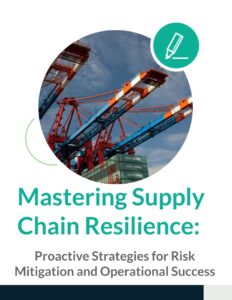Scaling a business is an exhilarating challenge that every ambitious executive aspires to master. The prospect of expanding operations, entering new markets, and achieving profitability serves as a foundation for remarkable growth. However, without a well-crafted strategic plan and the right partnerships, scaling can threaten a company’s stability, reputation, and financial health.
Leaders who embark on this journey without a solid blueprint risk false starts, failed transformations, or even job loss—highlighting the inherent risks of pursuing growth and explaining why many leaders hesitate to take the plunge. This comprehensive guide aims to equip leaders with actionable strategies for successful scaling, ensuring long-term sustainability and a diverse customer base.
Why Scaling Matters
Scaling is not just about growing bigger; it’s about growing smarter. Today’s market demands agility, innovation, and a keen understanding of customer needs. When done right, scaling can position your enterprise as a market leader, ready to seize new opportunities and tackle challenges head-on.
Let’s explore proven strategies for scaling your business effectively. We’ll cover everything from operational efficiency to customer retention, giving you the tools to plan for large-scale transformation without losing momentum.
Assessing Your Readiness for Scaling
Before embarking on the exciting journey of scaling your business, it’s crucial to assess your current operations comprehensively. Begin by conducting a thorough audit of your resources, processes, and market conditions. This involves not only reviewing your financial resources but also evaluating your human capital, technology, and infrastructure. You can begin by asking yourself the following questions:
- Do we have the necessary infrastructure in place to support substantial growth? This includes evaluating your IT systems, supply chain logistics, and physical facilities.
- Are our current processes scalable? Consider whether your workflows and production methods can handle increased demand without sacrificing quality or efficiency.
- Do we have a clear understanding of market demands and customer needs? Engage with your customers through surveys or feedback mechanisms to gather insights into their expectations and preferences.
This detailed evaluation will help you identify both gaps and opportunities within your organization, ensuring you’re not only aware of your current standing but also well-prepared for the next phase of growth. By taking the time to assess these areas, you can create a strategic plan that sets a solid foundation for successful scaling, positioning your business for long-term success.
Strategic Planning for Large-Scale Transformation
Having a robust strategic plan is the backbone of successful scaling in any organization. It serves as a roadmap that guides your efforts and helps you navigate the complexities of transformation. To begin, outline clear objectives that define what success looks like for your scaling initiative. Establish realistic timelines that create a sense of urgency while remaining achievable. Additionally, identify key performance indicators (KPIs) that will help you measure progress and determine the effectiveness of your strategies.
Engaging stakeholders across all levels is crucial to ensure alignment and commitment to the scaling vision. This includes not only top management but also employees, partners, and customers who will be impacted by the changes. Regularly communicating the plan and encouraging feedback fosters a culture of collaboration and shared purpose.
Effective strategic planning involves setting realistic milestones that act as checkpoints along your journey. Break down your larger goals into manageable phases, which allows you to monitor progress closely and make necessary adjustments along the way. These phases should include specific actions, resource allocations, and responsible parties to enhance accountability.
This strategic foresight will keep your scaling efforts on track and allow you to pivot when challenges arise. By anticipating potential pitfalls and being prepared with contingency plans, you can navigate the dynamic landscape of large-scale transformation more effectively. Remember, a well-defined strategy not only guides your current efforts but also positions your organization for future growth and success.
Optimizing Operational Efficiency
Operational efficiency is a critical component of scaling. Streamline your processes to eliminate bottlenecks and improve productivity. Implement automation technologies to handle repetitive tasks, freeing up your team to focus on high-value activities.
Consider adopting lean methodologies to enhance efficiency. Lean principles emphasize continuous improvement and waste reduction, helping you create a more agile and responsive operation. By optimizing your operations, you can scale more effectively and sustainably.
Diversifying Customer Retention Strategies
Customer retention is key to sustainable growth. Diversify your retention strategies to cater to different customer segments. Personalize your interactions to build strong, lasting relationships with your customers.
Leverage data analytics to gain insights into customer behavior. Use this information to tailor your offerings and enhance customer satisfaction. By focusing on retention, you can foster loyalty and drive long-term revenue growth.
Leveraging Technology for Growth
Technology plays a pivotal role in scaling. It’s essential to choose the right technology strategically to support your operations and team. Focus on investing in scalable solutions that can evolve alongside your business. Cloud computing, for example, offers flexibility and scalability, allowing you to expand your IT infrastructure as needed.
Adopt customer relationship management (CRM) systems to streamline customer interactions and improve service delivery. Implementing the right technologies can give you a competitive edge and support your scaling efforts.
Building a Resilient Organizational Culture
A strong organizational culture is essential for successful scaling, acting as the foundation upon which organizations can grow. It not only defines the values and beliefs of the company but also shapes how employees interact with one another and approach their work. To foster a culture of collaboration, innovation, and continuous improvement, it’s important to create an environment where ideas can flow freely and diverse perspectives are valued.
Encouraging open communication is vital; this includes not just top-down communication but also creating avenues for employees at all levels to share their thoughts and feedback. Empowering your employees to contribute actively to the scaling vision helps generate creative solutions and increases their sense of ownership and commitment to the organization’s goals.
Investing in leadership development is another critical component in building a resilient team. This involves offering training programs, mentorship opportunities, and resources that equip leaders with the skills they need to guide their teams through the complexities and challenges of scaling. A positive organizational culture can significantly drive employee engagement, fostering a sense of belonging and loyalty, which ultimately enhances overall performance and productivity.
By prioritizing these elements, organizations can cultivate a robust culture that not only withstands the pressures of growth but also thrives in dynamic environments.
Financial Planning for Sustainable Growth
Effective financial planning is crucial for scaling. Develop a comprehensive financial plan that outlines your funding needs, revenue projections, and expenditure forecasts. Secure adequate funding to support your scaling initiatives.
Monitor your financial performance closely and adjust your strategies as needed. By maintaining a strong financial foundation, you can scale your business sustainably and mitigate financial risks.
Expanding Your Market Reach
When considering growth, it’s crucial to focus on expanding your market reach as a fundamental strategy for scaling. Explore new markets and customer segments to diversify your revenue streams effectively. Conduct thorough market research to gain insights into the needs and preferences of your target audience.
Harness digital marketing channels to connect with a wider audience. Utilize tools such as social media, search engine optimization (SEO), and content marketing to enhance your visibility and attract new customers. By broadening your market reach, you can drive substantial growth.
Enhancing Product and Service Offerings
Continuous innovation is essential for scaling. Enhance your product and service offerings to meet evolving customer needs. Invest in research and development (R&D) to create innovative solutions that differentiate your business from competitors.
Gather feedback from customers to identify areas for improvement. Use this feedback to refine your offerings and deliver exceptional value. By continuously enhancing your products and services, you can maintain a competitive edge.
Strengthening Supply Chain Management
Robust supply chain management is vital for efficient scaling and overall business success. An optimized supply chain not only ensures the timely delivery of products and services but also enhances customer satisfaction and loyalty. To achieve this, it’s essential to implement advanced inventory management systems that allow for real-time tracking of inventory levels, enabling businesses to minimize disruptions and respond swiftly to changes in demand.
Moreover, establishing strong relationships with suppliers and partners is crucial for fostering collaboration and reliability. Open lines of communication can lead to better forecasting, improved negotiation terms, and quicker problem-solving. Engaging in regular meetings and feedback sessions can help build trust and align shared goals, ultimately strengthening your supply chain.
Additionally, embracing technology and data analytics can provide valuable insights into supply chain performance, helping to identify bottlenecks and opportunities for improvement. A well-managed supply chain, supported by strategic partnerships and cutting-edge tools, can significantly bolster your scaling efforts and ensure smooth operations across all facets of your business.
Managing Risks and Mitigating Challenges
Scaling a business comes with inherent risks and challenges that can impact growth and sustainability. To navigate these complexities effectively, it is crucial to identify potential risks early on and develop comprehensive mitigation strategies to address them. Begin by conducting a thorough risk assessment to pinpoint vulnerabilities in your operations, market position, financial health, and supply chain. This assessment should also include an analysis of external factors, such as economic fluctuations and regulatory changes, that could affect your business.
Once risks have been identified, create detailed contingency plans that outline specific actions to take in response to various scenarios. These plans should include allocation of resources, roles and responsibilities, and communication protocols to ensure a swift response when challenges arise.
Moreover, it is essential to stay agile and adaptable in order to respond effectively to changing market conditions. This means regularly reviewing and updating your risk management strategies to align with new trends and potential threats. By proactively managing risks and fostering a culture of resilience within your team, you can minimize disruptions and enhance the likelihood of success for your scaling initiatives. Embracing a proactive approach not only protects your business but also positions you to seize opportunities that arise in a dynamic market landscape.
Measuring Success and Continuous Improvement
Regularly measure the success of your scaling efforts. Track your KPIs and analyze performance data to evaluate progress. Use this information to identify areas for improvement and make data-driven decisions.
Foster a culture of continuous improvement to drive ongoing success. Encourage feedback and innovation to enhance your processes and strategies. By continuously refining your approach, you can achieve sustainable growth.
Conclusion
Scaling your business is a complex yet rewarding endeavor. By following these strategies, you can achieve sustainable growth and position your enterprise for long-term success. From optimizing operational efficiency to diversifying customer retention strategies, each step is crucial for achieving your scaling goals.
Remember, scaling is not a one-time event but a continuous process of growth and improvement. Stay committed to your vision, adapt to changing market conditions, and leverage the power of technology to drive your scaling efforts.
If you’re ready to take your business to the next level, begin outlining the strategies mentioned in this article. For personalized support, consider booking a consultation with our expert advisors who can guide you through the scaling process. Together, we can turn your scaling vision into a reality.







